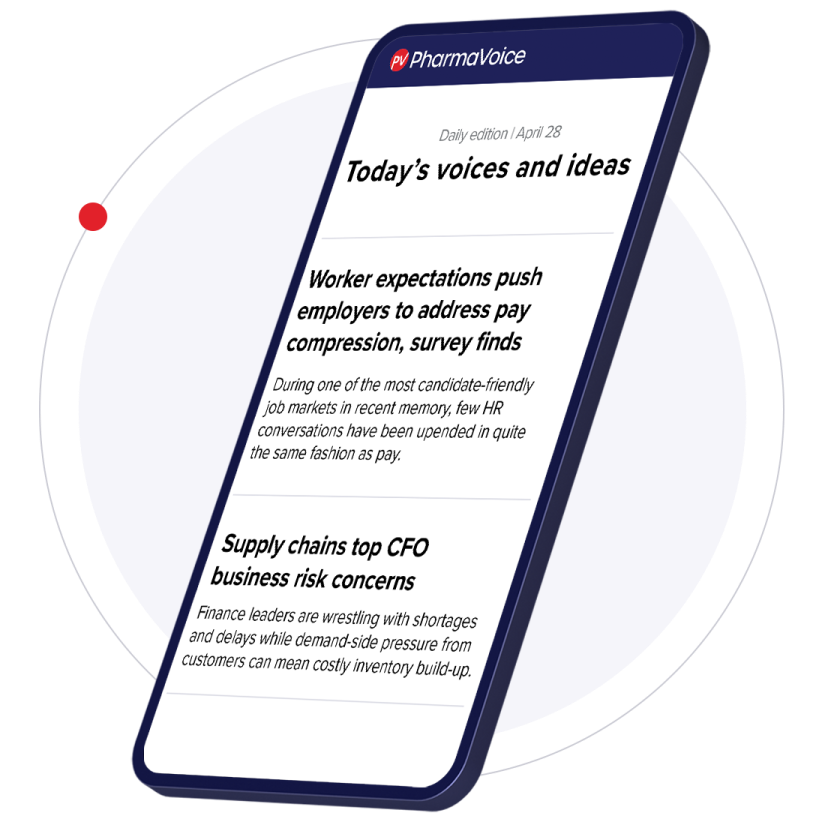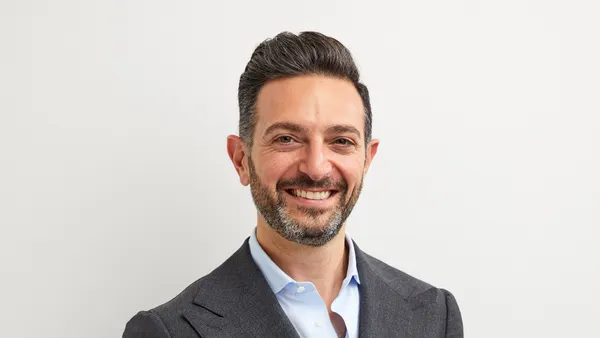Finding appropriate study subjects is still one of the biggest stumbling blocks for timely and efficient drug development. Recruiting patients for multinational trials can be even more daunting, since global trials add to the complexity. While experts say some issues are no longer an obstacle — such as technology infrastructure or finding trained investigators in many regions — multinational studies still present a challenge. A Cutting Edge Information study, Clinical Outsourcing Strategy, reports that patient enrollment is often underfunded and under-resourced. And according to Cutting Edge’s Streamlining Clinical Trials study, patient recruitment accounts for about 23% of the total clinical development timeline… Sidebar: Physician Referral Study Experts on this topic Gaynor Anders. VP, Global Operations, MMG, a full-service patient recruitment and retention group. For more information, visit wegetpatients.com. Ubavka Denoble, M.D. Senior VP, Global Project Management, i3 Research, a therapeutically specialized, global clinical research organization. For more information, visit i3global.com. Peter A. DiBiaso. Senior Clinical Operations Director, Shire Pharmaceuticals, a specialty biopharmaceutical company. For more information, visit shire.com. Roberta Duncan. Global Service Head, Site Start-up Management, Kendle, a global full-service clinical research organization. For more information, visit kendle.com. Ran Frenkel, R.Ph. CEO, Pharma Focus Israel, an international research management organization that addresses the limitations of conventional study practices. For more information, visit pharmafocus.co.il. Matt Kibby. Director, Global Operations, BBK Worldwide, a patient recruitment consultation and implementation partner. For more information, visit bbkworldwide.com. Rick Malcolm. CEO, Acurian Inc., a full-service provider of clinical trial patient recruitment solutions for the life-sciences industry. For more information, visit acurian.com. Joel Z. Melnick, M.D. VP, Clinical Research and Development, Cytochroma Inc., a clinical-stage specialty pharmaceutical company focused on products to treat and prevent vitamin D insufficiency and secondary hyperparathyroidism associated with chronic kidney disease. For more information, visit cytochroma.com. Elizabeth Moench. President and Founder, MediciGlobal, a specialty patient recruitment-retention firm serving the clinical trials industry. For more information, visit mediciglobal.com. Finding appropriate study subjects is still one of the biggest stumbling blocks for timely and efficient drug development. Recruiting patients for multinational trials can be even more daunting, since global trials add to the complexity. While experts say some issues are no longer an obstacle — such as technology infrastructure or finding trained investigators in many regions — multinational studies still present a challenge. A Cutting Edge Information study, Clinical Outsourcing Strategy, reports that patient enrollment is often underfunded and under-resourced. And according to Cutting Edge’s Streamlining Clinical Trials study, patient recruitment accounts for about 23% of the total clinical development timeline and is continuing to increase. Matt Kibby, director of global operations at BBK Worldwide, says patient recruitment has a wide-ranging impact on clinical development. “Patient requirement permeates every part of a trial," he says. “That means factors such as feasibility, country selection, and site selection are all enormously important and have to be considered so that downstream patient recruitment is less of an issue. By managing these parts of the process, the possible number of roadblocks can be reduced when it comes time for physicians to communicate the opportunity to patients and caregivers." Conducting trials globally, he says, means that developers also have to operationalize processes across many countries. “Global trials require communicating and coordinating with a lot of individuals," Mr. Kibby says. “For example, contracts need to be set up within the parameters of the legal framework of many different countries and the regulatory systems of many countries need to be understood. Patients cannot be enrolled if site readiness is a major bottleneck." Another challenge, according to Ran Frenkel, R.Ph., CEO of Pharma Focus Israel, is fully understanding the hidden and unhidden incentives of both patients and the investigators to participate in the trial. “The incentives might be significantly different not only between countries but also within a country," he says. Elizabeth Moench, president and founder of MediciGlobal, points out that understanding the different regulatory systems is vitally important when developing a multinational patient recruitment plan. “While it might be less expensive to do clinical research in some countries, regulatory delays can offset the savings," she says. “Additionally, ethics approval, in some countries, can take a long time." These thoughts were echoed by 25 pharmaceutical clinical experts and specialty service providers who attended the Quest for Consensus: Searching for Patient Recruitment Solutions meeting in March 2009, which examined the issues involved with patient recruitment. The group’s conclusion was that there are three primary obstacles that impact meeting patient recruitment goals for clinical studies: repeated and failed behaviors by study sponsors; complex and unrealistic protocols; and flawed feasibility assessments of study sites. The Sponsor Peter DiBiaso, senior clinical operations director at Shire Pharmaceuticals, agrees that sponsors are responsible for some of the major challenges in recruiting and retaining patients for global studies. “Within the industry, there’s been so much focus and pressure on reducing development timelines and optimizing study efficiencies that study and protocol feasibilities are often limited," he says. “This scenario then leads to required amendments and additional delays, which, at the end of the day, slows down recruitment and decreases site motivation." Attendees at the Quest for Consensus meeting recommended that companies develop budgets to support the patient-recruitment function early in the planning process to avoid costly rescue missions. They also recommended employing patient recruitment monitors to assist study sites, which would relieve traditional clinical research associates (CRAs) of this responsibility. These monitors would serve to engage and educate study site staff and help them take full advantage of patient recruitment resources. The group also noted that sponsors should incorporate strong educational recruitment program discussions into the traditional investigator/coordinator meetings, as well as hold meetings dedicated to patient recruitment and conduct face-to-face study site assessments. In addition, the group proposed the development of an industry-sponsored, shared database where all sponsors could access information about the past performance of study sites. Mr. Kibby says more and more sponsors are addressing the issue earlier in the process because they are starting to understand the importance of planning for recruitment further upstream. “The benefit of early planning is that it allows for contingency plans; creating and deploying tactics after problems occur is much more difficult and time-consuming," he says. “Sponsors have to understand on a country-by-country basis what the opportunities are, as well as what motivates patients and physicians to participate in the study." The Protocol Experts agree that patient recruitment has to be a critical component of a protocol’s design. Ubavka DeNoble, M.D., senior VP, global project management, at i3 Research, says however that restrictive inclusion criteria eliminate about 30% of available patients for studies. “Inclusion/exclusion criteria can drastically narrow the population qualified to participate in the clinical study," she says. “On the other hand, a good design and examination of the traditional inclusion/exclusion criteria early on can expand the patient pool and help enrollment." To overcome this barrier, The Quest for Consensus experts suggested that sponsors conduct strategic planning earlier to assess whether current resources match the needs of the study based on a protocol’s timelines, which could help ensure that the actual implementation timelines are realistic. The group also suggested that sponsors conduct simulations of the actual operations against the protocol at the study site among key opinion leaders and investigators. Coordinators also can serve as test cases to help ensure that the required study procedures can be performed at those sites. These steps would help avoid unrealistic procedure scheduling and timeframes as well as study site resource issues. The Site Because even the most extensive databases can experience recruitment challenges, Roberta Duncan, global service head, site start-up management, at Kendle, says it’s important to have a plan for success at each site. This should include a strategy for timely activation; knowing the access points to patients at the site through its patient database or clinical community; and a mechanism to reach patients within the community. “Web-based tools can assess site level recruitment strategies, establish and measure against enrollment targets, and quickly implement efforts to optimize recruitment," she adds. Multinational trials, especially, have to take into account the cultural differences of patients around the world, and the best way to do that is to have a local presence in the market where the trials are being conducted, says Joel Melnick, M.D., VP of clinical research and development at Cytochroma. “Whoever is conducting the study should have a local presence," he says. “That, in my experience, is a good way to ensure study success. Having a local contact for the site in case there are any questions or problems is important because there is less of a language or cultural barrier. From a time-zone perspective, communications can be done in almost real time. Even though the phone and Internet are virtual and real-time tools, there is an advantage to having someone just a few miles away." Ms. Moench says it’s also critical to involve the study site in the development of plans and materials for patient recruitment. “Sites should have input into their own recruitment plans," she says. “Sponsors and their patient recruitment partners should give them realistic scenarios as part of recruitment preparation to get them thinking about how to approach the patient for recruitment. Sponsors can’t wait until the study goes into rescue mode; they have to proactively engage sites in the recruitment process." Part of the site plan should include a training component on how to communicate with patients, Ms. Moench says. “Often, investigators haven’t thought through in a systematic way what they need to tell patients about a study," she says. “They need assistance in the communications process. All too often there is an assumption that doctors or nurses know how to explain a study because of their medical background." Gaynor Anders, VP, global operations, at MMG, agrees that training is an important component for study success. “Materials alone are not going to lead to the success of a study," Ms. Anders says. “Without buy-in, ongoing communications, and effective training of key stakeholders — sites, CRAs, country study managers — it is unlikely that an ROI can be maximized. Working with sites once they are up and running and having a flexible program allows for a proactive response to unforeseen challenges." When it comes to developing a global program, Mr. DiBiaso contends that a one-size-fits-all approach to recruitment isn’t as efficient as one might think. “It’s a bit of a cliché, but customizing the approach by market is important," he says. “For efficiency’s sake, there is a desire to establish a core program that crosses multiple regions, but often the strategy adopted for one region has little benefit in other countries. A customized approach can require multiple vendors, increase overall study costs, and lead to a significant demand in additional start-up resources, but at the end of the day, it will pay dividends downstream in terms of overall success." Dr. DeNoble says because there is still a lack of awareness about clinical trials in some parts of the world, there is a need to educate the medical community. “Education is important, especially in light of the fact that the industry is trying to accelerate patient enrollment in Eastern Europe, Latin America, Asia, China, and India," she says. Part of the education process requires raising awareness around cultural variations and the country-by-country regulations, says Rick Malcolm, CEO of Acurian. “We would all like to find a simple solution that applies uniformly across the continuum to all parties," he says. “But I don’t think this is a realistic expectation." Mr. Malcolm says having metrics to assess patient recruitment at the site level is an important best practice. “There is still a lot to be done to make patient recruitment a more metric-driven process, like much of the rest of clinical research," he says. “A lot of time, energy, and money have been spent to build tracking systems that report what tactics deliver in terms of response, account for the number of patients who complete physician visits, log in signed informed consent forms, and so on, all of which can ultimately help make an ROI determination." F PharmaVOICE welcomes comments about this article. E-mail us at [email protected]. Patient requirement permeates every part of running a trial. That means factors such as feasibility, country selection, and site selection are all enormously important. MatT Kibby BBK e Restrictive inclusion criteria eliminate about 30% of available patients for clinical trials. Dr. Ubavka Denoble i3 Research
An article from


Patient Recruitment: Strategies for Multinational Studies
Filed Under:
Research & Development









